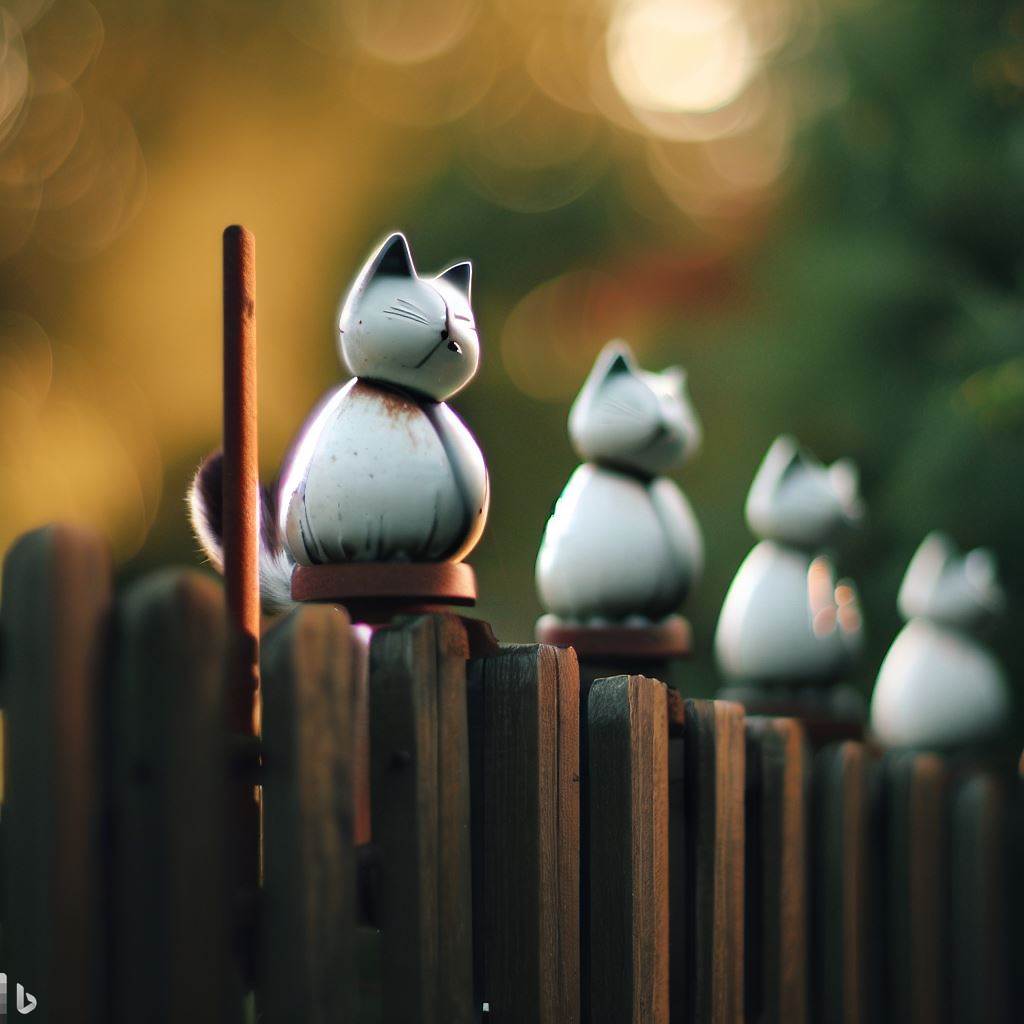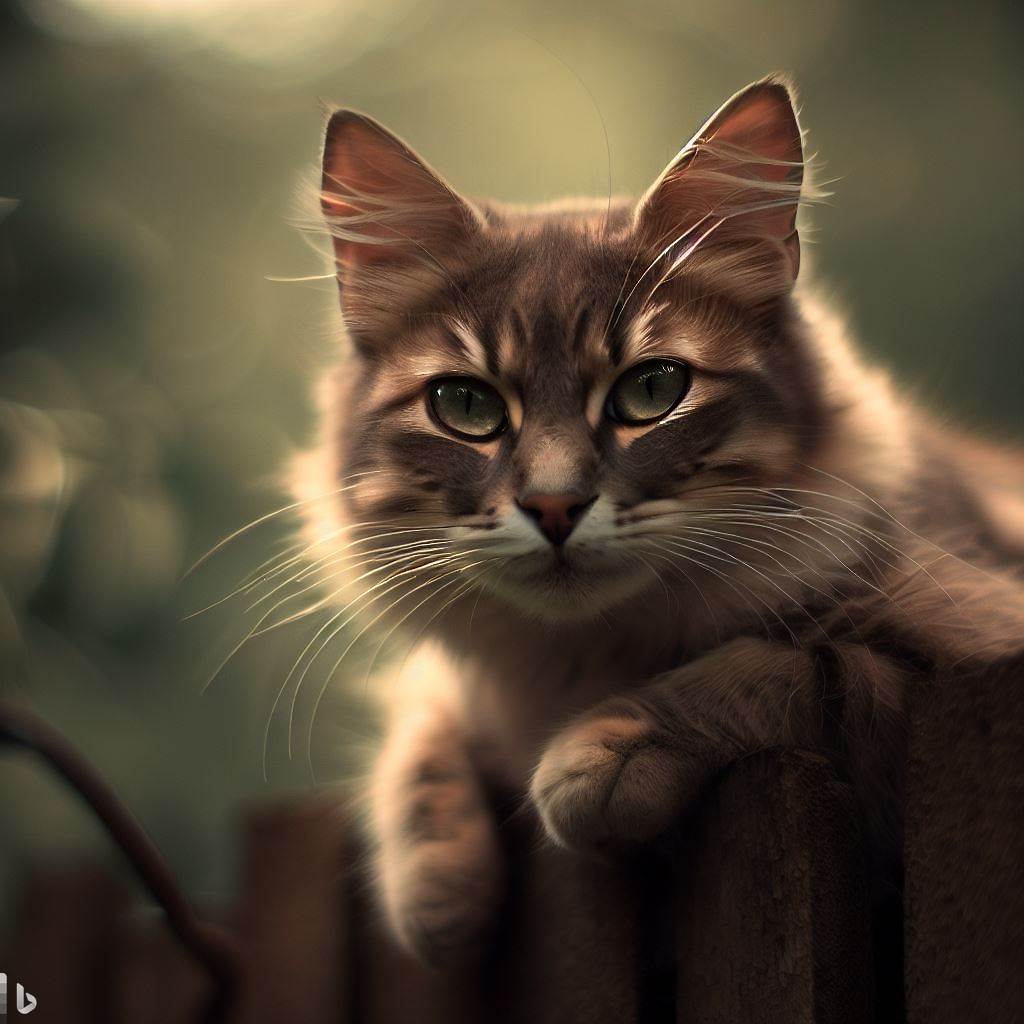Are you a proud owner of a mischievous feline friend who loves exploring the great outdoors? If so, you understand that ensuring their safety and security is of utmost importance. One effective solution to keep your curious cat from wandering off is by installing a fence topper specifically designed for our agile and adventurous companions.

Now, if you’re scratching your head wondering what a cat fence topper is – think of it as an elegant crown perched atop your garden barriers. Not only do these contraptions keep our curious four-legged companions from exploring beyond their allotted kingdom (your backyard), but they also add a touch of aesthetics to it!
In this blog post, we will delve into the world of cat fence toppers, exploring the different types, materials, installation processes, safety considerations, benefits, maintenance tips and common problems encountered with these ingenious solutions.
Here is an article you might be interested in firewood delivery nashville
Here is also another exciting article to read foundation ventilation fans
Types and Materials of Fence Toppers for Cats
When it comes to choosing the perfect fence topper for your beloved pet cat, there are various options available in terms of both types and materials. Let’s take a closer look at some popular choices:
1. Cat Containment System
This type of fence topper provides an enclosed area where your furry friend can roam freely without escaping onto neighboring properties or roads. Made from durable mesh material specifically designed with cat-proofing in mind.
2. Outdoor Cat Enclosure
Similar to a containment system but larger in size, these enclosures allow cats more space while still providing secure boundaries.
3. DIY Cat Fence Solution
For those who enjoy getting creative and saving money at the same time, opting for a DIY solution can be both fulfilling and cost-effective. These often involve attaching netting or wire mesh on top of existing fences.
4. Secure Fencing for Cats
If you have an existing fence that needs reinforcement against nimble climbers like cats, adding additional wiring or PVC pipes can create obstacles that deter escape attempts.
Installation Process of Cat Fence Toppers
Installing a cat fence topper may sound like quite the task; however many options available today make it a breeze. Here’s a general overview of the installation process:
1. Measure and Prep: Begin by measuring your fence perimeter to determine the amount of material needed. Prepare an area for assembly, ensuring all necessary tools are at hand.
2. Secure Base: Attach the base component of your chosen cat fence topper securely onto the top edge of your existing fence using screws or brackets, following manufacturer instructions.
3. Install Mesh or Enclosure Panels: If you have opted for a containment system or outdoor cat enclosure, attach mesh panels to each side of the base structure with clips or zip ties, ensuring a secure fit.
4. Reinforce Points of Weakness: Pay extra attention to areas where cats may attempt to climb over or squeeze through gaps in fencing by adding additional reinforcement measures such as angled barriers or extending mesh higher above ground level.
5. Perform Safety Checks: After installation is complete, thoroughly inspect the integrity and durability of your cat fence topper before allowing your feline friend access. Ensure there are no sharp edges or loose components that could potentially harm them while exploring their newfound safe haven.
Safety Considerations for Using a Cat Fence Topper
While cat fence toppers are designed with safety in mind, it is always important to take precautions when introducing any new environment for your furry companion:
1. Supervise Initial Use
When allowing your cat access to their new outdoor space enclosed by a fence topper, supervise their initial explorations closely until you are confident they understand boundaries and limitations.
2. Create Sheltered Areas
Cats enjoy spending time outdoors but can also be sensitive creatures who appreciate shaded spots during hot weather conditions. Providing sheltered areas within their fenced enclosure will allow them options for comfort throughout the day.
3. Require Monitoring Near Busy Roads
Although cat fences offer protection from vehicles on busy roads surrounding properties, it is still essential for owners residing near high-traffic areas to monitor their feline friends closely when outdoors.
Benefits of Using a Cat Fence Topper
Investing in a cat fence topper provides numerous benefits for both you and your furry friend. Here are some reasons why it’s worth considering:
1. Enhanced Safety: By erecting a cat fence topper, you create a secure environment that keeps your beloved pet safe from potential dangers such as traffic accidents or encounters with aggressive animals.

2. Peace of Mind: With the knowledge that your curious cat is unable to roam freely beyond the boundaries of your property, you can enjoy peace of mind, knowing they won’t get lost or injured during their outdoor adventures.
3. Reduced Unwanted Behavior: Cats are naturally curious creatures who may explore neighboring properties or engage in territorial disputes with other cats if given the chance. A cat fence topper helps prevent these unwanted behaviors by establishing clear boundaries.
4. Enriched Environment: Outdoor exploration offers mental stimulation and physical exercise opportunities essential for your feline friend’s well-being and overall happiness.
Maintenance Tips for Cat Fence Toppers
Proper maintenance ensures the longevity and functionality of your chosen cat fence topper solution:
1. Regularly inspect all components of the fence to ensure there are no signs of wear or damage that may compromise its effectiveness or pose risks to your pet’s safety.
2. Keep mesh panels clean by regularly removing any debris such as leaves, twigs, or spider webs that could obstruct visibility or allow pests access into your cat’s enclosure space.
3. If using metal materials on your fence toppers, apply rust-resistant paint or treatments periodically to protect against corrosion caused by exposure to elements like rain and sun.
4. Over time, screws may become loose due to weather conditions or repeated use. Make sure all connections are tight by periodically checking and tightening any loose screws or clips.
How to Choose the Best Fence Topper for Your Pet Cat
When selecting a cat fence topper, consider the following factors:
1. Height and Climbing Deterrence
Opt for a fence topper that is tall enough to prevent your agile cat from climbing over it. Additionally, look for features such as angled barriers or extending mesh higher above ground level that further deter attempts at escape.
2. Material Durability
Ensure the chosen materials are durable enough to withstand various weather conditions and potential wear-and-tear caused by playful cats.
3. Ease of Installation
Consider your own DIY skills and whether you would prefer a straightforward installation process or are willing to invest time in more complex options.
4. Cost vs. Quality
Compare different models available within your budget while considering durability, effectiveness, and long-term value.
Common Problems and Solutions with Cat Fence Toppers
Even with careful planning, some issues may arise when using cat fence toppers; however, there are often simple solutions available:
- Predators Accessing Enclosure
In certain areas where wildlife poses a threat, additional measures such as burying mesh underground or creating an enclosed roof can prevent predators from gaining access.
- Escaping Through Gaps
Address gaps between existing fencing structures by attaching additional mesh material on both sides of the enclosure walls so cats cannot squeeze through small openings.
- Visual Obstruction Concerns
If aesthetics are a priority but you still want maximum security for your pet, opt for transparent netting materials instead of solid panels that allow visibility without compromising safety.
- Fence Compatibility Issues
Depending on the type of existing fence you have; some fittings may not be compatible with certain cat fence products. Research compatibility before purchasing any materials.
Conclusion
Choosing the right cat fence topper can provide peace of mind, allowing your furry friend to safely explore the outdoors while ensuring their security. Take into account factors such as type, material, installation process, safety considerations, benefits, maintenance tips, and potential problems when selecting the perfect fence topper for your beloved feline companion.
With a little bit of effort and creativity, you can create a secure environment where both you and your cat can enjoy the wonders of outdoor living without worry.
Read another exciting blog post here four cheese smoked mac and cheese
This is the article to read for today french drain with pop up emitter
FAQs
Q: What are the most effective fence toppers for cats?
A: The most effective fence toppers for cats are cat-proof fence systems that can be installed on top of your existing fence. These systems, such as coyote rollers or types of mesh, prevent cats from scaling or jumping over the fence.
Q: How can I keep my cat safe in the yard?
A: To keep your feline friend safe in the yard, you can install a cat-proof fence to prevent them from roaming freely. This cat containment solution creates a secure boundary, keeping your cat safe at home.
Q: What types of cat-proof fence materials are available?
A: There are various materials you can use to create a cat-proof fence. Some popular options include steel, chain-link, timber, brick, composite fencing, and vinyl. Choose a material that suits your preferences and fits into the overall aesthetic of your yard.
Q: Can I install the fence topper myself or do I need professional help?
A: Many cat-proof fence systems offer easy DIY installation, allowing you to save money and take pride in creating a cat-proof environment for your furry friend. However, if you’re unsure about the installation process, it’s always best to consult a professional for assistance.
Q: How does a cat-proof fence system work?
A: A cat-proof fence system typically consists of overhangs, rotating devices, or barriers mounted on top of the fence. These features make it difficult for cats to gain traction or grip, preventing them from climbing or jumping over the fence.
Q: Are there any specific features I should look for in a cat-proof fence?
A: When choosing a cat-proof fence system, look for features such as durability, ease of installation, compatibility with your existing fence posts, and effectiveness in preventing cats from escaping. Additionally, consider the aesthetics and overall design of the system to ensure it complements your yard.
Q: Can a cat-proof fence also keep other animals out?
A: Yes, a cat-proof fence can also help keep other animals, such as coyotes or neighborhood dogs, out of your yard. The design and materials used in a cat-proof fence make it challenging for larger animals to scale or breach the fence.
Q: Is there a minimum height requirement for a cat-proof fence?
A: To effectively prevent cats from jumping or climbing over the fence, it’s recommended to have a fence that is at least 6 feet tall. This height deters most cats from attempting to escape their designated area.
Q: Can I use a cable or chicken wire as a cat-proof fence?
A: While cable or chicken wire may provide a temporary solution, they are not the most effective way to keep cats contained. These materials may be easily climbed or damaged, allowing cats to escape. It’s better to invest in a cat-proof fence system specifically designed for feline safety.
Q: Are cat-proof fence toppers suitable for indoor cats?
A: Cat-proof fence toppers are typically designed for outdoor use to allow cats to safely roam and explore the yard. However, if you have indoor cats and want to provide a secure outdoor space for them, you can consider creating a smaller cat-proof enclosure within your yard.